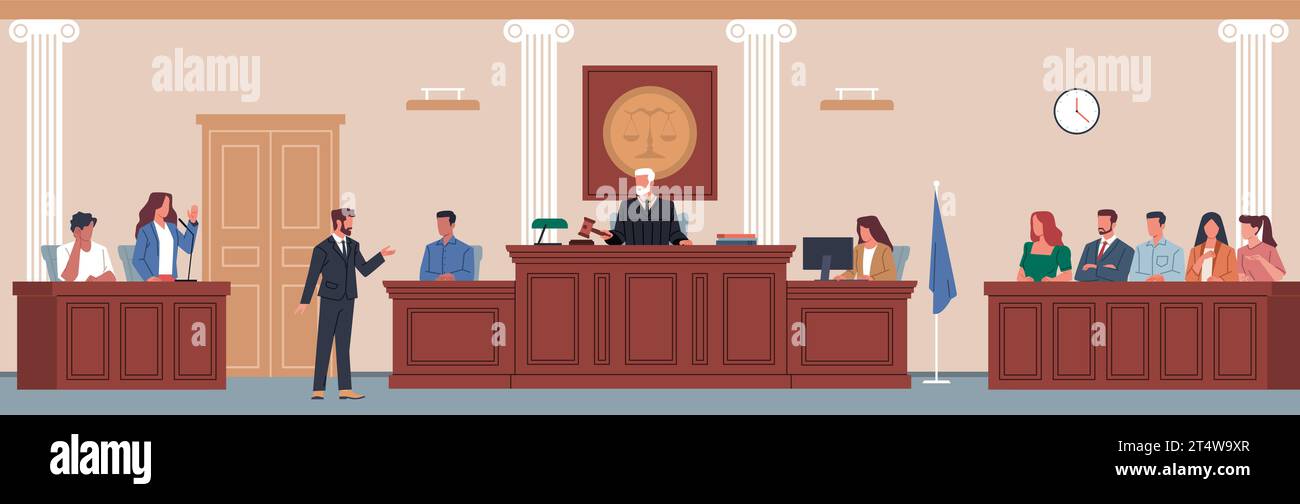Multimedia in trial presentations help simplify legal arguments.
Multimedia in trial presentations help simplify legal arguments.
Blog Article
How Test Presentations Enhance Your Disagreement and Persuade Jurors
Trial discussions serve as an essential mechanism for boosting legal debates and encouraging jurors. By incorporating visual aids, narrative structures, and psychological interaction, lawyers can produce an engaging case that reverberates on multiple degrees. The tactical use visuals not just clarifies complex details however likewise captures jurors' attention better than words alone. Nonetheless, the art of narration plays a just as crucial function in transforming valid evidence into a compelling narrative, forming jurors' perceptions - trial presentations. Recognizing these elements can significantly affect trial outcomes, raising the concern of just how each component adds to this intricate dynamic.

Relevance of Aesthetic Help
Aesthetic help play a crucial role in improving the efficiency of test discussions, as they can significantly raise audience engagement and retention of details. In the context of a test, where jurors are charged with processing facility information, aesthetic help offer to simplify and clarify bottom lines. Graphes, charts, and photos can share data and principles that might or else bewilder or confuse jurors, permitting a more straightforward understanding of the proof provided.
Moreover, aesthetic aids aid in maintaining juror focus throughout the procedures. By damaging the monotony of spoken testimony, these tools can stress important arguments, making them much more unforgettable. Efficient aesthetic aids can also evoke psychological responses, which can be crucial in persuading jurors to line up with the presenter's narrative.

Crafting Compelling Narratives
A compelling narrative is vital in trial discussions, as it functions as the backbone of efficient persuasion. It permits attorneys to weave with each other facts, evidence, and psychological aspects into a meaningful tale that resonates with jurors. This narrative framework makes it possible for jurors to understand the complexities of the situation while guiding them through the lawyer's argument.
To craft an engaging story, attorneys need to concentrate on clarity and comprehensibility. This involves developing a clear protagonist-- often the customer-- and outlining their trip via the occasions concerned. Presenting the truths in a rational series enhances understanding and preserves engagement. Furthermore, using brilliant descriptions can develop psychological photos that help jurors envision the events, making the narrative a lot more unforgettable.
In addition, integrating crucial styles throughout the presentation enhances the core message and help in retention - trial presentations. The narrative must not only communicate information but likewise evoke a feeling of justice, highlighting the risks entailed. Inevitably, a sound story fosters a connection between the jurors and the situation, positioning the attorney's argument as both legitimate and compelling, thereby enhancing the chance of a beneficial verdict

Involving the Jury Psychologically
Effective jury involvement hinges on the attorney's capacity to get in touch with jurors on a psychological level. This link can dramatically influence jurors' assumptions and their best decision-making. Utilizing psychological allures allows lawyers to humanize the instance, transforming abstract legal principles into relatable experiences. By offering real-life stories or reviews, lawyers can evoke empathy and compassion, promoting a deeper understanding of the problems at risk.
Visual help, such as photographs or video clips, can visite site better improve emotional involvement, supplying jurors with vibrant representations of the case's human components. Crafting a narrative that highlights the struggles and accomplishments of the people involved makes sure that jurors see beyond the lawful arguments and acknowledge the human repercussions of their choices.
An attorney's enthusiastic delivery can resonate with jurors, reinforcing their psychological financial investment in the instance. It's crucial to stabilize psychological charms with accurate evidence, guaranteeing that jurors feel forced to act while continuing to be based in the reality.
Structuring Your Discussion

The body of the presentation must be practically segmented into bottom lines, each sustained by compelling proof. It is valuable to use narration methods to weave truths into a story that jurors can quickly follow. Visual help, such as graphes and video clips, can enhance comprehension and engagement, helping to highlight crucial items of evidence.
Real-World Instance Studies
Checking out real-world study offers important understandings right into the art of test presentations and persuasion. The landmark case of "O.J. Simpson v. The Individuals of The golden state" shows check out here exactly how aesthetic help and compelling stories can guide jury understandings. The protection group efficiently used a strategy that combined high-profile expert statements with multimedia discussions, which astounded jurors and inevitably affected their choice.
An additional remarkable instance is the "McDonald's Coffee Situation," where the plaintiff's attorneys made use of graphic images of the injuries received by Stella Liebeck. trial presentations. This plain aesthetic proof played an important role in sharing the seriousness of her burns, leading to a significant jury award. Such instances demonstrate that click this link impactful trial presentations often depend upon the reliable assimilation of visuals and storytelling to evoke emotional responses from jurors
Moreover, the "Casey Anthony Trial" highlighted the significance of narrative comprehensibility and integrity. The prosecution's failure to develop a compelling timeline lessened their persuasive power, emphasizing the necessity of a well-structured presentation. Analyzing these instances exposes that effective trial presentations need strategic planning, psychological involvement, and the ability to reverberate with jurors' worths and ideas.
Conclusion
Trial discussions dramatically boost disagreements and encourage jurors with the tactical usage of visual help, engaging stories, and emotional engagement. A well-structured discussion equilibriums emotional allures with factual evidence, inevitably resonating with jurors' values.
Report this page